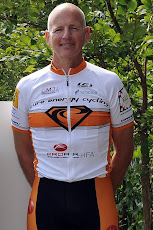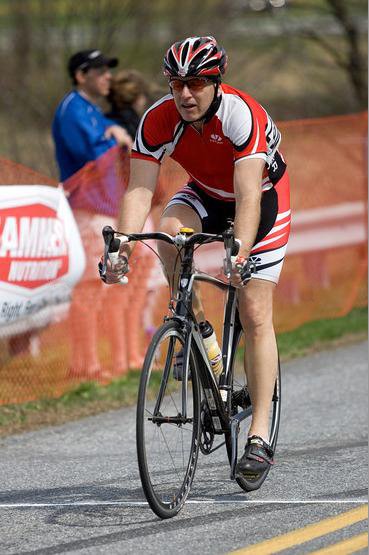Ok, so I said whenever a cool product hits the market I would review it. Well, this product isn't necessarily new but it's new to me and it's WAY COOL! The program (or game) is called Zwift. What is Zwift? It's an online (internet) game, it's an interactive cycling software program, it's a training aid, and it's FUN! See
www.zwift.com
What you need to set up Zwift is a bike, a cycling trainer with a power meter, a laptop or desktop computer and an internet connection. You can even run the Zwift program from a phone or iPad. That power meter can be built into the Hub of your wheel (provided it can communicate via Bluetooth or ANT+ protocol with the computer that the Zwift software is installed on), it can be a HR Monitor/Power Meter strap (such as the PowerCal from Power Tap), it can be a trainer such as Computrainer (by Racermate) or one by Cycleops or Tacx. The more accurate the power meter, the more realistic the online experience. The computer should have a good network or Wifi connection with hi-speed internet service. It should also have a fast graphics card/adapter. If not, the Zwift software program won't run properly or won't run at all.
Once set up on your computer you can go for a group training ride, sign up for a race, or just ride alone. The first thing to do, once you sign-on is to determine what your Functional Threshold Power (FTP) is. You can do that by clicking on the FTP test. You have the option of doing a 1 hr. FTP test or a 20 min. abbreviated FTP test. I chose the latter. Once you determine your FTP (mine was 210w when I tested it last night. My FTP is actually closer to 220w) you divide that number by your weight in kilograms. To do that, just weigh yourself in lbs. and divide by 2.2. I weigh 160 lbs. so my weight in kg is 160/2.2= 73kg. Now, take the FTP (210w) and divide that by the weight (73) and you get a power to weight ratio (w/kg) of 2.9 w/kg. If you want to race online, you need to know this number so you can ensure you sign up for the correct race. The races are rated/categorized A thru D. Here is the Zwift w/kg per race category:
A> 4 w/kg
B= 3.2- 4 w/kg
C= 2.5- 3.2 w/kg
D< 2.5 w/kg
Based on this, my w/kg was smack in the middle of the C-category. So, I entered a Cat-C race and I got shelled/dropped...ha. I could clearly see that the people ahead of me were not Cat-C riders, their w/kg was close to 4, some even over 4 w/kg. By the way, these people are real people from all over the world. So, just like in real life racing, there are sandbagger racers online. It's easier to sandbag at an online race than it is a real race. The easiest way to do it is to enter a weight (into the software program) lower than your actual weight. The other is to use a Power Meter that is not calibrated properly and reads high. I know that the PowerCal HR monitor/power meter reads 10% higher than my Computrainer Power Meter. I know Zwift is trying to police this somehow/some way. Here is a screen shot of a race:

The Zwift software tells you everything you want to know about the race/ride. It tells you your power output (watts), your Heart Rate (bpm), your cadence (rpm), your speed (mph), the distance and time into the race and the time remaining. It also tells you the other racers around you, their names, where they're from, their w/kg, etc.
All of this Fun is not free however. After your free 7-day trial, you must pay $15/mo. to continue. But, that's cheap considering one spinning session at your local gym where they play Beyonce music for 45 minutes charges $25. That's $15/mo. for unlimited riding, races, etc. Even if you only sign-up for the Winter months (December thru March) it's well worth it in my opinion. Because there is no better cycling training than racing.
Check it out, I think it's a cool program that's only going to get better. Power ON! Coach Rob





























